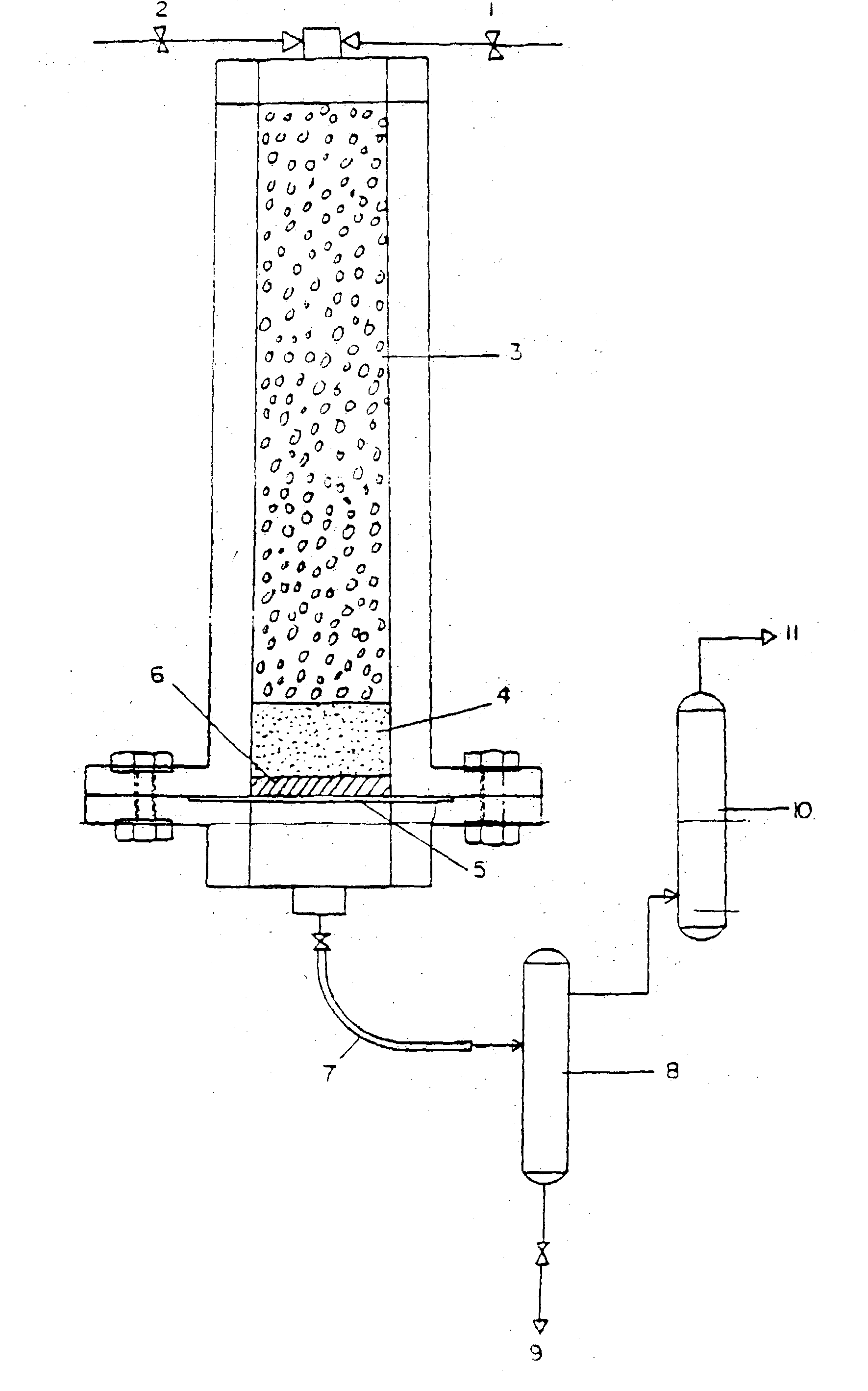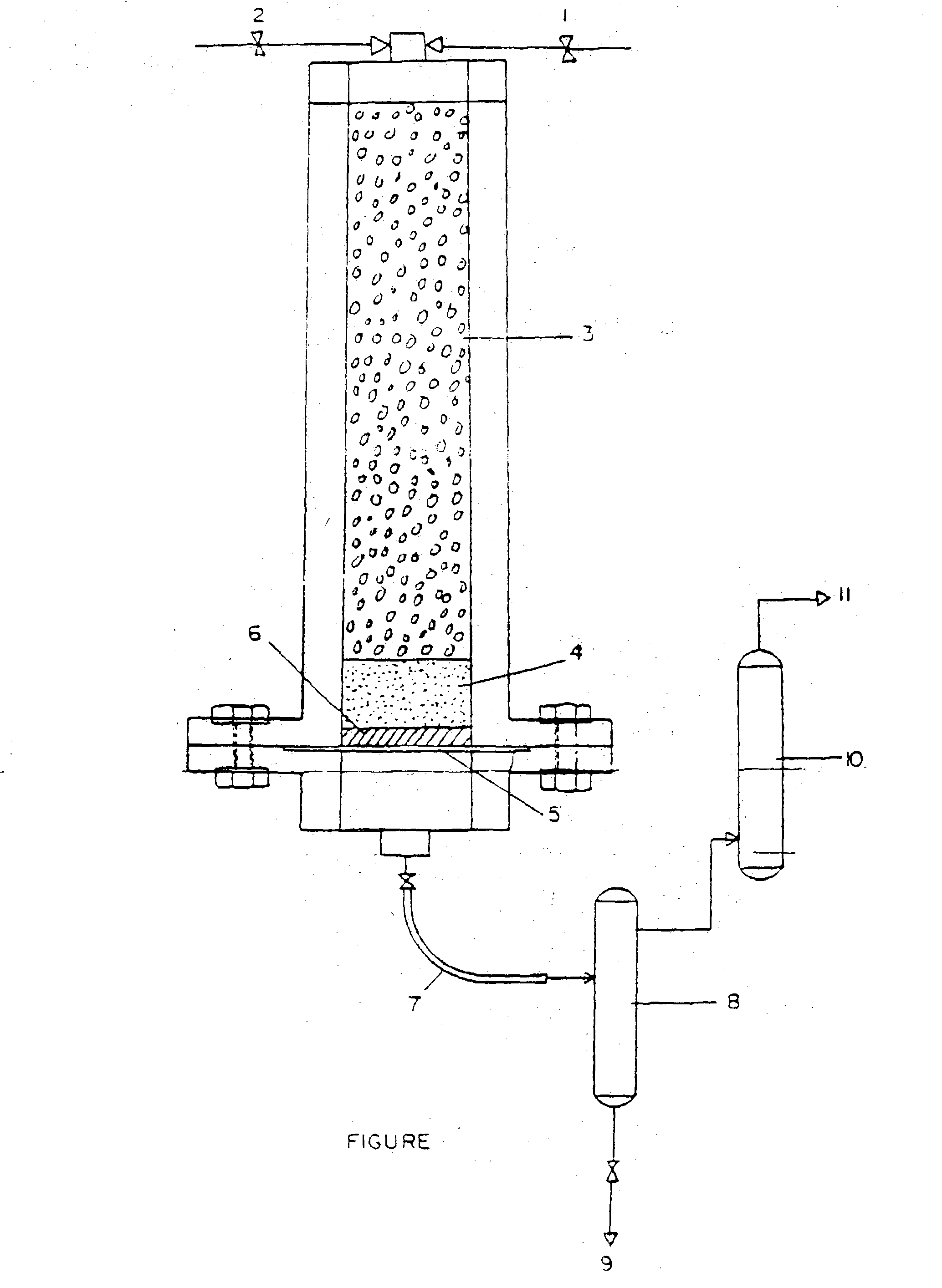Process for production of cumene
a technology of cumene and process, applied in the field of cumene preparation process, can solve the problems of flash condensation, increased operating cost, and poor
- Summary
- Abstract
- Description
- Claims
- Application Information
AI Technical Summary
Benefits of technology
Problems solved by technology
Method used
Image
Examples
example 1
8% solution of polyphenylene oxide (PPO) is prepared in toluene by dissolving the polymer with stirring at ambient conditions for 8 hours, filtering through sintered funnel, degassing and then poured onto a flat bottomed glass surface and then kept under humidity and temperature controlled atmosphere for initial evaporation of solvent. This resulted in a membrane with a thickness of 150 microns. In order to ensure complete removal of solvent, the membrane was dried in vacuum over for 24 hours and then used for mounting at downstream side of the catalytic membrane reactor.
example 2
4% solution of silicon rubber (SR) was prepared by dissolving in chloroform with stirring for 4 hrs. Benzoyl peroxide (3% by wt. of SR) was added to this solution. Stirring was continued for half an hour, followed by filtering and pouring of filtered solution on a flat glass surface for solvent evaporation under controlled temperature and humidity. After complete evaporation of the solvent, the dried film was kept in a muffle furnace at 120° C. for 3 hours. After this treatment a clean transparent film was obtained. The film was again given an oven treatment at about 40° C. for half an hour. Thickness of membranes obtained was around 60 μm. The membrane was mounted at the downstream end of the catalytic membrane reactor.
example 3
2% solution of silicon rubber (SR) was prepared by dissolving in toluene with stirring for 4 hrs. Benzoyl peroxide (3% by wt. of SR) was added to this solution. Stirring was continued for an hour followed by filtering and pouring of solution on a flat glass surface for solvent evaporation under controlled temperature and humidity. After complete evaporation of the solvent, the dried film was kept in a muffle furnace at 120° C. for 3 hours. After this treatment, a clean transparent film was obtained. The film was again given an oven treatment at about 40° C. for half an hour. Thickness of membranes obtained was around 130 μm. This membrane was use for mounting at the downstream of the catalytic membrane reactor.
PUM
| Property | Measurement | Unit |
|---|---|---|
| pressure | aaaaa | aaaaa |
| temperature | aaaaa | aaaaa |
| reaction temperature | aaaaa | aaaaa |
Abstract
Description
Claims
Application Information
 Login to View More
Login to View More - R&D
- Intellectual Property
- Life Sciences
- Materials
- Tech Scout
- Unparalleled Data Quality
- Higher Quality Content
- 60% Fewer Hallucinations
Browse by: Latest US Patents, China's latest patents, Technical Efficacy Thesaurus, Application Domain, Technology Topic, Popular Technical Reports.
© 2025 PatSnap. All rights reserved.Legal|Privacy policy|Modern Slavery Act Transparency Statement|Sitemap|About US| Contact US: help@patsnap.com



